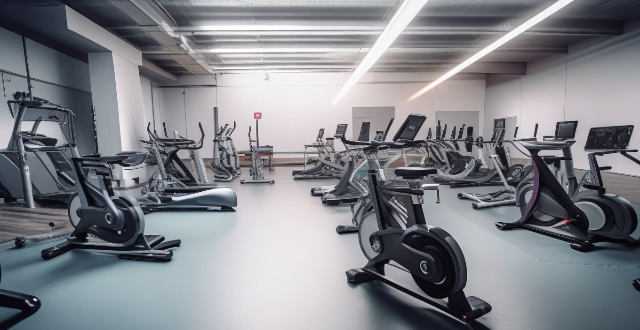3D printing technology has revolutionized the sports equipment industry by enabling customization, rapid prototyping, complex designs, and on-demand production. This innovation benefits athletes with personalized gear, faster design cycles, optimized performance, and sustainable practices.

3D Printing Technology: A Game Changer in Sports Equipment Design and Production
The advent of 3D printing technology has revolutionized various industries, including the sports equipment sector. This innovative technology has significantly impacted the way we design and produce sports equipment, offering numerous advantages over traditional manufacturing methods. Let's delve into the details of how 3D printing has transformed the sports equipment industry.
Customization and Personalization
One of the most notable changes brought by 3D printing technology is the ability to create customized and personalized sports equipment. With 3D printing, designers can easily adjust the dimensions, shape, and weight of equipment to suit individual athletes' preferences and requirements. This level of customization was not feasible with mass production techniques, where standardization was necessary to maintain efficiency and reduce costs.
Key Points:
- Enhanced Performance: Customized equipment can lead to better performance as it can be tailored to fit an athlete's body type, strengths, and weaknesses.
- Reduced Injury Risk: Personalized equipment can also help reduce the risk of injuries by providing a better fit and support for the athlete.
Rapid Prototyping and Iteration
Traditional manufacturing processes often involve lengthy and costly steps, such as creating molds and setting up production lines. In contrast, 3D printing allows for rapid prototyping, enabling designers to quickly test new ideas and make adjustments without significant delays or additional costs.
Key Points:
- Faster Design Cycles: Designers can experiment with different designs and iterate more quickly, leading to faster product development cycles.
- Cost-Effective Testing: The ability to create multiple versions of a prototype without incurring high costs makes it easier to test and refine designs before final production.
Complex Geometries and Lightweight Designs
3D printing technology enables the creation of complex geometries that would be challenging or impossible to achieve using traditional manufacturing methods. This capability allows designers to optimize sports equipment for performance by incorporating intricate structures that can improve strength, flexibility, and aerodynamics.
Key Points:
- Optimized Performance: Advanced geometries can enhance the performance of sports equipment, such as reducing wind resistance in cycling or improving ball trajectory in golf clubs.
- Weight Reduction: By designing equipment with internal lattice structures or other lightweight materials, 3D printing can help reduce the overall weight of sports equipment, leading to increased speed and agility for athletes.
On-Demand Production and Sustainability
3D printing technology supports on-demand production, meaning that equipment can be manufactured as needed rather than in large batches. This approach reduces waste and inventory costs while allowing for quick response to changing market demands or athlete preferences.
Key Points:
- Reduced Waste: On-demand production minimizes excess inventory and waste associated with traditional manufacturing processes.
- Sustainable Practices: 3D printing can contribute to more sustainable practices by reducing material usage and enabling the use of eco-friendly materials.
Conclusion
In conclusion, 3D printing technology has significantly changed the way we design and produce sports equipment. From customization and personalization to rapid prototyping and iteration, this innovative technology offers numerous advantages over traditional manufacturing methods. As 3D printing continues to evolve, we can expect further advancements in sports equipment design and production, ultimately benefiting athletes and driving performance improvements across various sports disciplines.